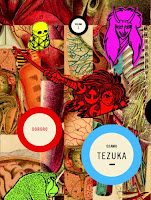 Creator: Jiro Taniguchi
Creator: Jiro Taniguchi
U.S. publisher: Fanfare/Ponent Mon
ISBN: 9781908007049
Released: June 2011
Original release: 2008
A Zoo in Winter is the most recent work by Jiro Taniguchi to be published in English. Originally released in Japan in 2008, the English edition was published by Fanfare/Ponent Mon in 2011. Taniguchi, an accomplished artist who has been nominated for and has won a number of awards, has been on my radar for quite some time. While A Zoo in Winter is not the first manga by Taniguchi that I have read (that honor goes to his short story “Summer Sky,” collected in the anthology Japan: As Viewed by 17 Creators, also published by Fanfare/Ponent Mon), it was the first full-length work of his that I had the opportunity to read. Taniguchi and his work is the focus of March 2012’s Manga Moveable Feast. I chose to examine A Zoo in Winter more closely for several reason, but primarily because it is semi-autobiographical. Additionally, Taniguchi often collaborates with other creators, but he both authored and illustrated A Zoo in Winter. I also thought that as a single volume A Zoo in Winter would provide a good introduction to Taniguchi and his work.
Eighteen-year-old Mitsuo Hamaguchi began working at Watanabe Commercial, a cloth accessories wholesaler in Kyoto, with the hope of becoming a product designer. But because that work is now done outside of the company, he is never given the opportunity. Instead, he spends most of his free time drawing, frequently visiting the nearby zoo to practice his sketch work. After an unfortunate incident with the boss’s daughter, Hamaguchi finds that continuing to work at the firm would be uncomfortable at best. And so he visits a friend in Tokyo who happens to know Shiro Kondo, a successful mangaka who is looking for another assistant. Hamaguchi is quickly put to work and is soon swept into a new way of life with long, hard hours and perpetually looming deadlines. Under Kondo and the other assistants’ care and guidance, Hamaguchi’s skills continue to improve. Eventually he would like to strike out and create a manga of his very own, but he’s discovering it to be much more difficult than he imagined.
Although he is the main character, Hamaguchi is frequently overshadowed by the other, more vibrant people in his life. He tends to be quite and reserved, but this makes him charmingly awkward. He is easily embarrassed, deals with youthful jealousy and competitiveness, and regularly broods. Hamaguchi is still very much a teenager and still has room to grow and mature. One of the recurring themes in A Zoo in Winter is the need for a person to have drive in order to do well and that that drive may take on many different forms. For much of A Zoo in Winter Hamaguchi lacks that focus and intense desire. Although he is shown to be a hard worker and is devoted to what he is doing, it is not until he finds his source of inspiration that he finally comes alive and finds the joy in creation. Hamaguchi’s development as a person and as a character in A Zoo in Winter is convincing and is handled naturally.
A Zoo in Winter is a quiet story. Some people may even find it boring, but I think its realism is what makes it work so well. While there may not be thrilling action sequences there is still plenty of interpersonal drama as Hamaguchi finds his place in the world. His relationships with other people and his own self-discovery provide much of the driving force behind the story. Taniguchi’s artwork, particularly his backgrounds, is also realistic and detailed. His draftsmanship is really quite impressive. Reading A Zoo in Winter gives a genuine sense of stepping back into the Tokyo of the late 1960s. My only complaint about the English edition of A Zoo in Winter is with how it has been flipped. Some of the individual panels, instead of being mirrored like the rest, remain as they were originally drawn. This means that the flow of images and dialogue can occasionally be awkward or difficult to follow. But it’s fairly easy overlook this flaw because other than that, A Zoo in Winter is an excellent volume. It’s a wonderful tale of a mangaka’s early beginnings and personal growth.







